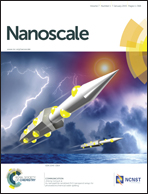We report an efficient, general methodology for producing high-surface area metal oxide nanomaterials for a vast range of metal oxides, including at least one metal oxide nanomaterial from nearly every transition metal and semi-metal group in the periodic table (groups 3–4 and 6–15) as well as several from the lanthanide group (see Table 1). The method requires only 2–3 simple steps; a hydrated metal salt (usually a nitrate or chloride salt) is ground with bicarbonate (usually NH4HCO3) for 10–30 minutes to form a precursor that is then either untreated or rinsed before being calcined at relatively low temperatures (220–550 °C) for 1–3 hours. The method is thus similar to surfactant-free aqueous methods such as co-precipitation but is unique in that no solvents are added. The resulting “solvent-deficient” environment has interesting and unique consequences, including increased crystallinity of the products over other aqueous methods and a mesoporous nature in the inevitable agglomerates. The products are chemically pure and phase pure with crystallites generally 3–30 nm in average size that aggregate into high surface area, mesoporous agglomerates 50–300 nm in size that would be useful for catalyst and gas sensing applications. The versatility of products and efficiency of the method lend its unique potential for improving the industrial viability of a broad family of useful metal oxide nanomaterials. In this paper, we outline the methodology of the solvent-deficient method using our understanding of its mechanism, and we describe the range and quality of nanomaterials it has produced thus far.

You have access to this article
 Please wait while we load your content...
Something went wrong. Try again?
Please wait while we load your content...
Something went wrong. Try again?


 Please wait while we load your content...
Please wait while we load your content...